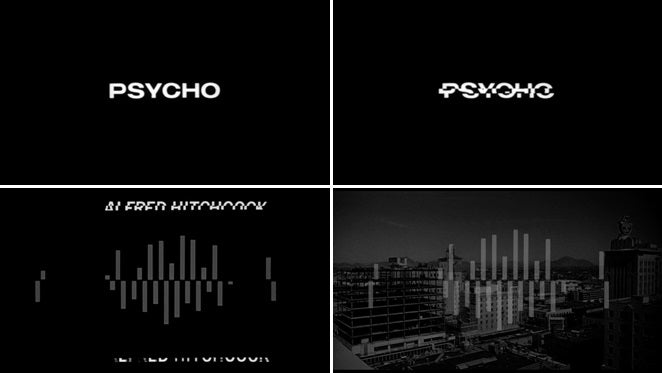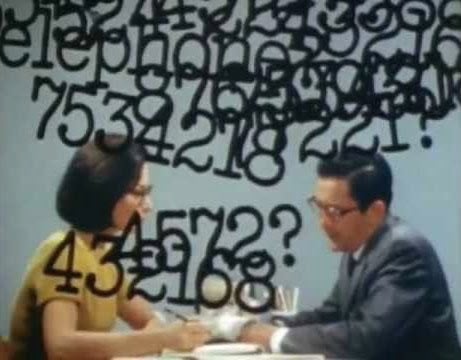
I last reported on my Saul Bass project a couple of years ago, when I was deep into the writing of the book. After the long process of publication—which involves finding a publisher, going through a peer review, making revisions, collecting permissions for images—, it is now done. The process is especially time-consuming and costly if you require legal permissions from studio rights holders, rather than rely solely on academic "fair use." Happily, I was able to talk one studio down from $1000 per image to $100, still a hefty price when you are clearing 50 to 100 images. Meanwhile, somewhat ironically, the artists' rights organization for some of this country’s most renowned painters gave me permission at no cost. Unfortunately, the Saul Bass estate did not grant me permission to use the images they control; as I point out in my book introduction, this is a continuation of a policy Bass himself pursued to control his brand rigorously. Saul Bass: Anatomy of Film Design will be published by University Press of Kentucky in the next few days, and I will present my inaugural lecture on Bass at the Academy Film Archive’s Linwood Dunn Theater in Los Angeles on October 20.

It’s been my experience that much of the general public has never heard of Saul Bass, yet almost everyone knows his work—whether his logos for the Girl Scouts of America, United Airlines and AT&T; his film titles for Anatomy of a Murder (1959), Psycho (1960) and Goodfellas (1990); or his Academy Award-winning film Why Man Creates (1968). My book examines the career of one of Hollywood’s most accomplished designers, who worked in film advertising, designed posters, created title sequences, directed commercials, independent documentary and fiction films, as well as corporate identity campaigns for clients outside Hollywood. Rather than seeing each one of these aesthetic endeavors in isolation, the book argues that they all manifested a particular brand, revealing similar design strategies, themes and looks, which have become identified with the post-WWII era now associated with Madmen. Furthermore, Bass’ design aesthetic was heavily influenced by the clean, modernist look of the Bauhaus school, as it was translated into a particular idiom for corporate America. Many of Bass’ designs were in fact influenced by modernist art. For example, his poster for Anatomy of a Murder (1959) is seemingly an homage to a painting by American Abstract Expressionist Mark Rothko, Orange and Yellow (1956). By infusing his Hollywood design work with high art modernism, Bass was responsible for elevating the sophistication of Hollywood films and advertising. After initial chapters on the history of the Saul Bass design office, as well as the aesthetic influences of László Moholy-Nagy and György Kepes, the book analyzes various aspects of his work within the context of the history of movie advertising, film posters and film titling. Thus, while one chapter looks at the designer’s logo aesthetic of pars pro toto, another discusses his montage techniques, which endeavored to create a multiplicity of views. The final chapters are thematically linked: urban landscapes, travel as a form of experience, and constructing knowledge through communication. In looking at Bass’ incredibly varied work, the book also discusses the designer’s relationship to film auteurs such as Otto Preminger, Alfred Hitchcock, Billy Wilder, Robert Aldrich and Martin Scorsese. In reading Saul Bass’ independently-produced films, such as The Searching Eye (1964), Why Man Creates (1968) and The Solar Film (1979), the book identifies an artist willing to utilize techniques of the avant-garde to give audiences the greatest degree of freedom to uncover essential truths for themselves. Indeed, Saul Bass’ films and title sequences take audiences on journeys of discovery that enrich them. My book will hopefully allow a reading of Bass’ oeuvre that establishes to what degree Saul Bass really defined an era in American film design.
After initial chapters on the history of the Saul Bass design office, as well as the aesthetic influences of László Moholy-Nagy and György Kepes, the book analyzes various aspects of his work within the context of the history of movie advertising, film posters and film titling. Thus, while one chapter looks at the designer’s logo aesthetic of pars pro toto, another discusses his montage techniques, which endeavored to create a multiplicity of views. The final chapters are thematically linked: urban landscapes, travel as a form of experience, and constructing knowledge through communication. In looking at Bass’ incredibly varied work, the book also discusses the designer’s relationship to film auteurs such as Otto Preminger, Alfred Hitchcock, Billy Wilder, Robert Aldrich and Martin Scorsese. In reading Saul Bass’ independently-produced films, such as The Searching Eye (1964), Why Man Creates (1968) and The Solar Film (1979), the book identifies an artist willing to utilize techniques of the avant-garde to give audiences the greatest degree of freedom to uncover essential truths for themselves. Indeed, Saul Bass’ films and title sequences take audiences on journeys of discovery that enrich them. My book will hopefully allow a reading of Bass’ oeuvre that establishes to what degree Saul Bass really defined an era in American film design.
Listen to Archive director Jan-Christopher Horak discuss Saul Bass on KTEP radio.






 Mobile Navigation
Mobile Navigation

